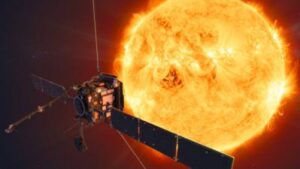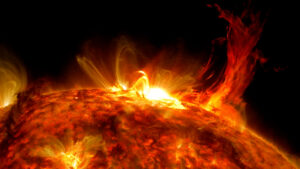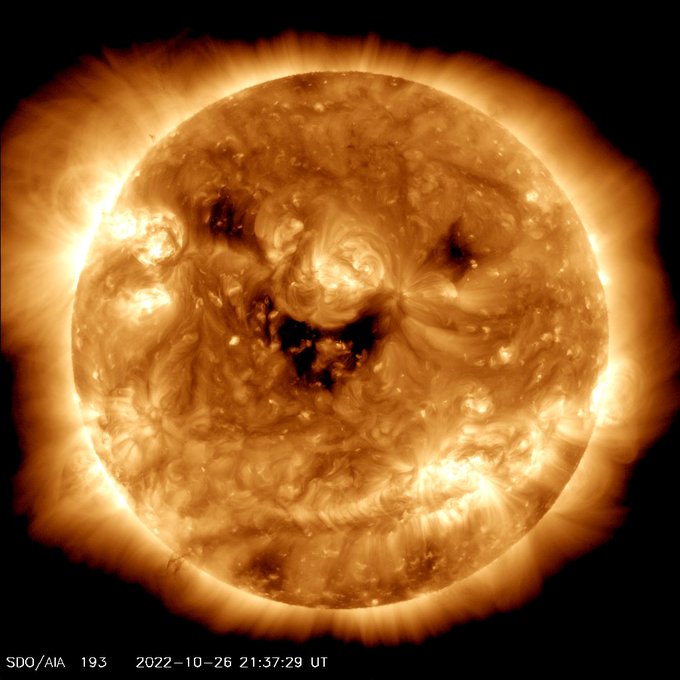NASA’s official Twitter shared this picture as the “smiling” sun on the occasion of Halloween.
Say cheese! 📸
Today, NASA’s Solar Dynamics Observatory caught the Sun "smiling." Seen in ultraviolet light, these dark patches on the Sun are known as coronal holes and are regions where fast solar wind gushes out into space. pic.twitter.com/hVRXaN7Z31
— NASA Sun, Space & Scream 🎃 (@NASASun) October 26, 2022
Professor of physics at the University of California at San Diego Brian Keating claimed that the sun is essential “the greatest nuclear reactor in our solar system.” The enormous, spinning, incandescent ball of hot gas is a whirlwind of activity every second, from electrical storms and sunquakes to the conversion of hydrogen into helium, which emits heat equivalent to many nuclear bombs. According to Keating, The Washington Post, some of the solar activity was captured on camera by NASA’s satellite on Wednesday. The three patches that make up the “face” in the image are coronal holes, which are cooler regions of the sun’s outer layer, which typically have a temperature of around 10,000 degrees Fahrenheit.

Human eyes cannot perceive these patches because they are in the ultraviolet spectrum. It’s not like a ski resort because the temperature is only a couple hundred degrees, Keating explained. However, the [NASA satellite] sees them as dark holes because they are so dark and because we are observing them in UV radiation, which the human eye cannot see. It’s not simply intriguing formations traveling across the surface of the sun that make up the coronal holes. They are regions with strong magnetic fields that are continuously releasing solar wind, or a flow of protons, electrons, and other particles, into space. More than just a happy face, Keating claimed that the object’s eyes were like dazzling laser beams that were spewing particles that might seriously disturb Earth’s atmosphere.
Small amounts of the electrically charged particles could generate bright displays known as auroras, which are caused by the atmosphere’s gases reacting with the sun’s burped-up energy discharges. According to Keating, issues arise if a large number of minuscule particles strike Earth. They could be picked up by radio antennae and interfere with radio, television, and other communication channels rather than being drawn into the Earth’s magnetic field. Keating noted that a powerful solar storm might potentially harm electrical grids and result in blackouts.

Although images of a beaming sun have been captured in the past, such as in 2013 after it “devoured a comet” or in 2014 when NASA dubbed it a “Pumpkin Sun,” the worst-case scenario Keating described hasn’t happened in nearly 200 years. The most recent large geomagnetic storm to have such an effect on Earth was the Carrington Event in 1859, which caused fires at multiple telegraph stations and the illumination of auroras in tropical regions.
Scientists predict that will occur annually with a few percent likelihoods on average, but Keating noted that for so long, we had avoided all of these magnetic bullets. Because of this, the effects could be far more severe, especially in today’s culture, which is heavily reliant on technology.
- Misleading Video Alters Prime Minister Shehbaz’s Speech Targeting Political Rival, Not His Party - 21/04/2024
- ATC Grants Three-Day Remand for Suspects in Ichhra Bazaar Harassment Case - 19/03/2024
- Pakistan, India, and Bangladesh Lead World in Severe Smog Crisis, Exceeding WHO Guidelines - 19/03/2024


